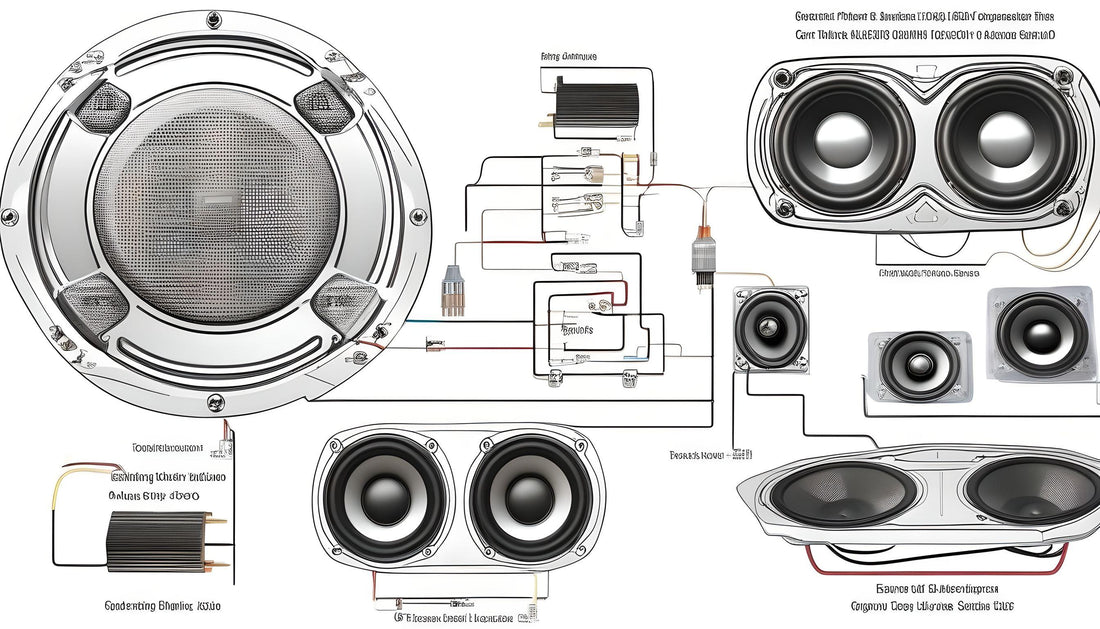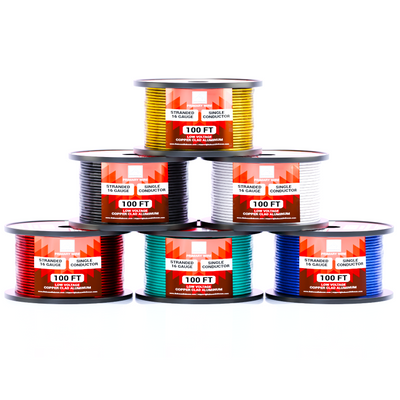
How to Replace Car Speaker Wires: A Step-by-Step Guide
Share
Introduction
If you have ever had to replace your car speaker wires yourself, you would understand how difficult and confusing the task can be. It is no surprise that people who haven’t done it see it as an impossible task. However, auto speaker wire replacement is no rocket science, and you will find that it is pretty easy and straightforward once you have the right instructions. We’ve provided the detailed steps for replacing car speaker wires. All you need now is to unleash the DIYer in you!

When Should You Replace Your Car Speaker Wires?
There are several situations where replacing your car speaker wires becomes necessary. Some of such situations are as follows:
1. Wear and Tear: It should be replaced when the wire wears out or becomes frayed due to overuse or long-term usage.
2. Sound Issues: It should be replaced when the speaker starts making cracking sounds or suddenly stops working for no obvious reason.
3. Quality Concerns: It should be replaced when your speaker wire fails to meet the quality requirements of a good speaker wire.
Signs of Wear and Tear
Wear and tear on speaker wires can result from prolonged use or exposure to harsh environmental conditions. Over time, wires can become brittle, frayed, or even corroded. Inspect your wires regularly for visible signs of damage. If you notice any cuts, abrasions, or discoloration, it's a good indication that it's time for a replacement.
Identifying Sound Issues
Crackling sounds, intermittent audio, or complete loss of sound can often be traced back to faulty speaker wires. Before replacing your speakers or other audio components, check the wiring connections. Loose or corroded wires can disrupt the audio signal, leading to poor sound quality or complete audio failure.
Meeting Quality Standards
Quality speaker wires are essential for maintaining the performance of your car's electrical system. If your current wires do not meet the standards for conductivity, insulation, and durability, it's wise to upgrade to higher-quality wires. This ensures a reliable and high-quality audio experience.

Consequences of Not Replacing Bad Speaker Wires
Failure to replace your car speaker wire could have some terrible consequences such as:
1. Short Circuits: You may experience a short circuit, which could eventually damage your speaker or car stereo.
2. Sound Degradation: Failure to replace bad speaker wires would cause your car speakers to crack.
3. Poor Sound Quality: Bad speaker wires have direct effects on the sound quality of your car speaker and stereo.
Risks of Short Circuits
Short circuits occur when the electrical current bypasses the intended path due to damaged or exposed wires. This can lead to overheating, equipment damage, and even fire hazards. Regularly inspect your speaker wires for any signs of wear to prevent these dangerous situations.
Impact on Sound Quality
Bad speaker wires can cause sound degradation, resulting in muffled, distorted, or crackling audio. This not only affects your listening experience but can also damage your speakers over time. Ensuring that your wires are in good condition helps maintain the integrity of your audio system.

Step-by-Step Guide to Replace Your Car Speaker Wires
With the right instructions, car speaker wire replacement is very easy. If not followed properly, however, you may cause some costly damages to the car speaker. Follow these simple steps to replace your car speaker wires without any glitches.

Step 1: Detach the Radio from the Dashboard
To remove the radio, check the stereo unit or central console and detach the trim panel around them. This might require special tools or a gentle prying tool to avoid damaging the trim.
Step 2: Pull Out the Speakers from Your Car Door
You can easily use a flat-end screwdriver to help disassemble the door panels. Once the door panel is removed, you can then unscrew the car speakers and detach the wires. Be careful not to damage any other components during this process.
Step 3: Cut the New Speaker Wires to the Right Size
When cutting the car speaker wire you intend to use, it is important that the wires are long enough; otherwise, such wires are useless. To be on the safe side, you should try to add an extra 15 inches to the original length. This extra length provides flexibility during installation and ensures a secure connection. It is advisable to use CCA Copper Clad Aluminum wire.
Step 4: Connect the Insulation with the Amplifier or the Head Unit Insulation
To connect these two, strip the tip of the insulation, and connect the stripped end with any wire in the amplifier. Ensure the connection point is stable and isolated, which can be achieved by soldering the joined point. Proper insulation is crucial to prevent short circuits and ensure a clean audio signal.
Step 5: Connect the Wires to the Speaker
When trying to connect the wires to the speaker, make sure that the wires you are connecting to all speaker locations are properly separated and are the correct gauge. Crossed wires can cause audio distortion or equipment damage. Secure each connection with appropriate terminals or soldering for a stable connection.
Step 6: Reinstall the Speaker Wires
Once all connections are successful, reassemble the speakers on the door panel, and reattach the radio to the dashboard. To ensure a clean and safe wire job, always make sure to hide the wire connections under your car floorboard properly. You should also ensure that you pay close attention to the colors of each wire to avoid electrical mishaps.
Additional Tips for a Successful Installation
· Use Quality Materials: Invest in high-quality speaker wires and connectors. This ensures longevity and better performance.
· Follow Manufacturer Guidelines: Always refer to your car's manual or the speaker manufacturer’s instructions for specific guidance on wire replacement.
· Test Before Final Assembly: After connecting the wires, test the audio system to ensure everything works correctly before reassembling the door panels and dashboard.
Conclusion
Replacing car speaker wires may seem daunting at first, but with the right instructions and materials, it can be a straightforward task. Regular maintenance and timely replacement of worn-out wires will keep your car's audio system performing at its best, ensuring an enjoyable listening experience every time you hit the road.








